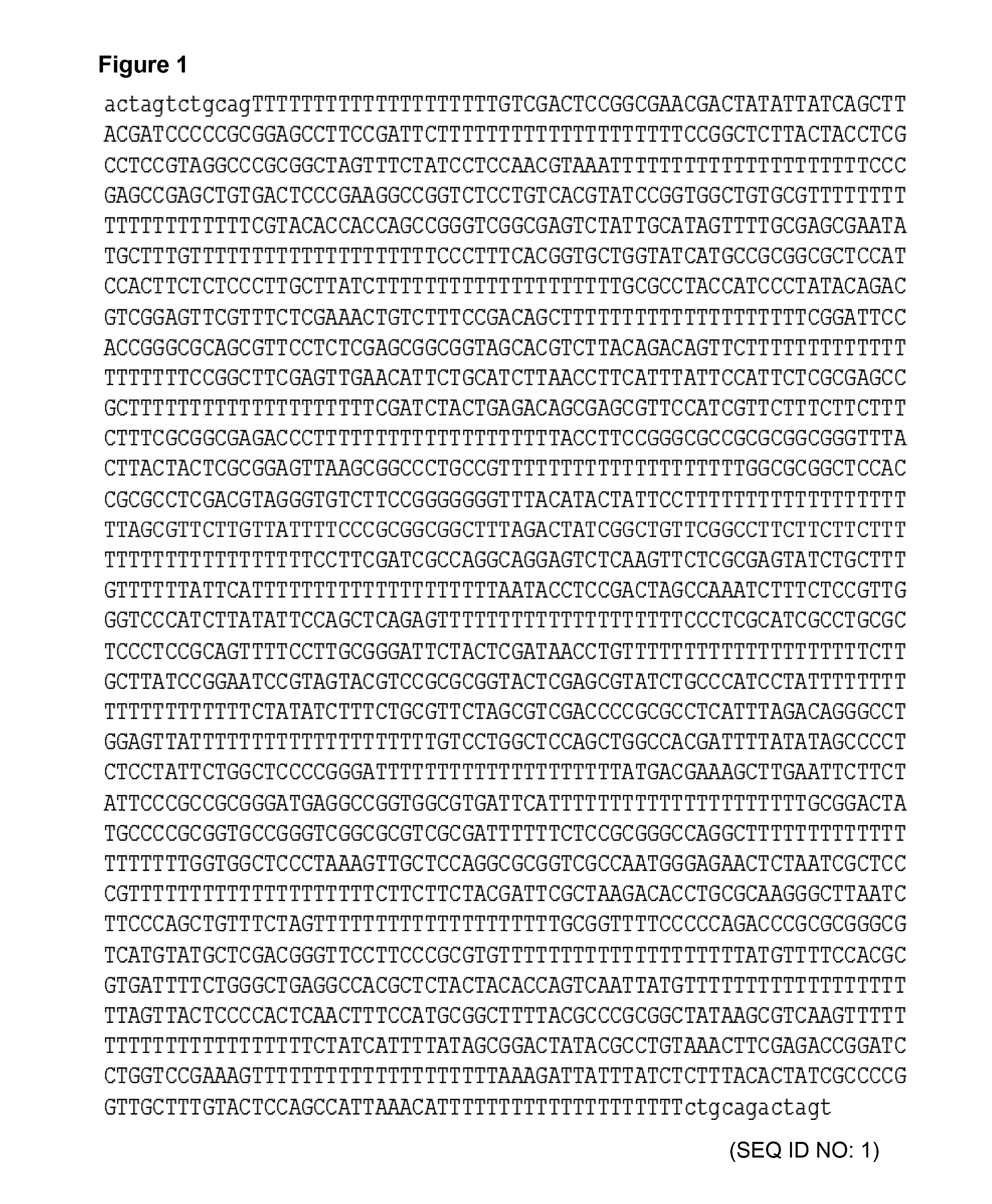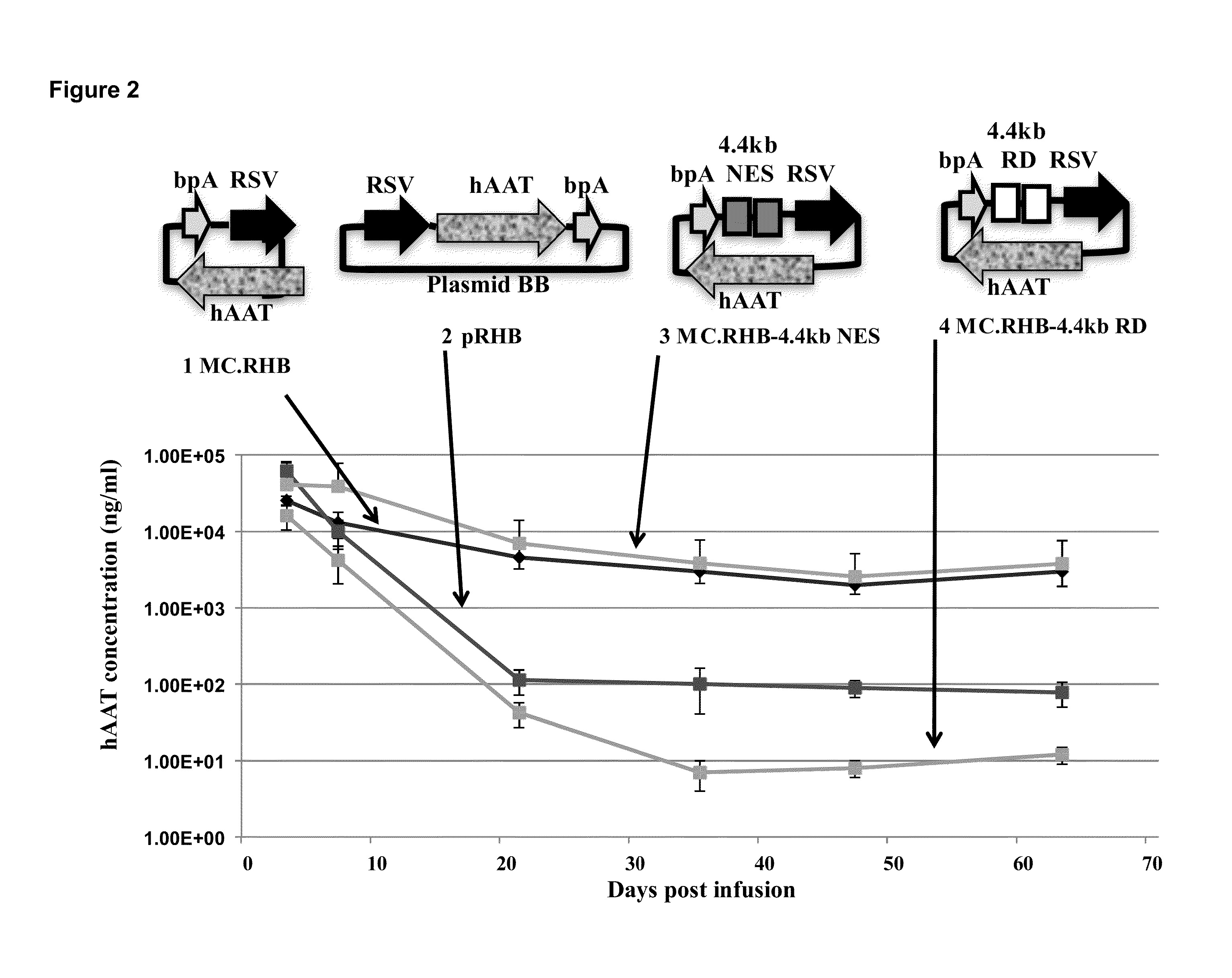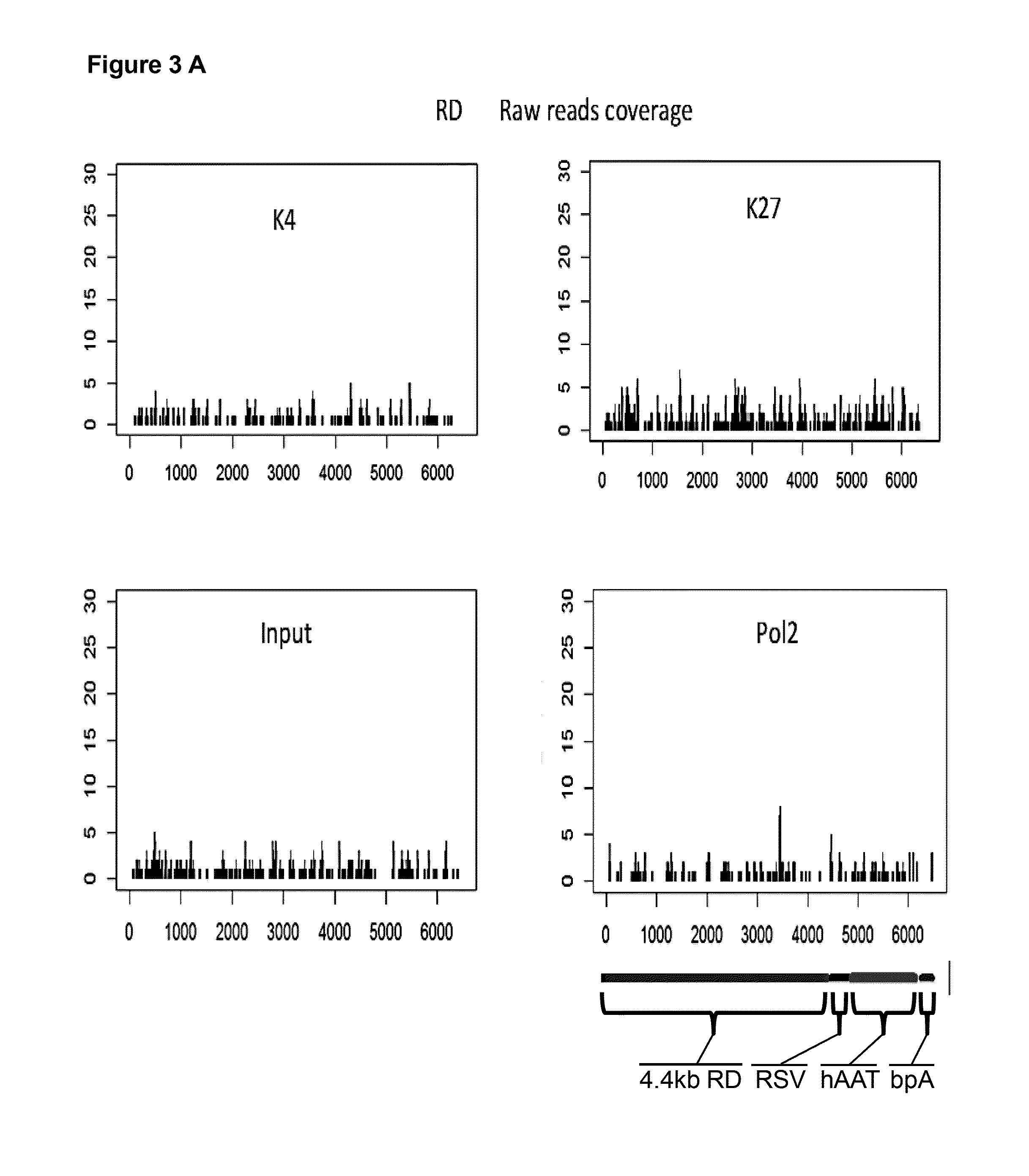Non-silencing selectable marker genes and methods of use
- Summary
- Abstract
- Description
- Claims
- Application Information
AI Technical Summary
Benefits of technology
Problems solved by technology
Method used
Image
Examples
example 1
“J-Kan” Functions as a Non Silencing Selectable Marker Gene
[0175]Plasmid DNA transgene silencing in vivo can be observed when ˜1 kb or more of DNA is placed outside of the transcription expression cassette (between the 5′ end of promoter and the 3′ end of polyA site), even when the bacterial plasmid DNA sequences are replaced with random DNA sequences (Lu, J, et. al., 2012 Mol Ther 20:2111-2119). These findings indicated that the length of the backbone and not anything specific about the bacterial plasmid DNA itself is the critical determinant responsible for transgene silencing in vivo. Based on this, a new transgene expression system was produced (called a “mini-intronic plasmid (MIP)”) that places the bacterial replication origin and selectable marker as a intron in the transgene expression cassette, but still keeps the juxtaposition of the 5′ and the 3′ ends of transgene expression cassette, as in a minicircle (Lu, J, et. al., 2013 Mol Ther 21: 954-963) (US Patent application US...
example 2
“J-Amp” Functions as a Non Silencing Selectable Marker Gene
[0185]Similar to how J-Kan was generated by modifying a wild type Kan resistance gene, “J-Amp” was generated by modifying a wild type Amp resistance gene (See sequences depicted in FIG. 9. The codons of the ampicillin resistance gene were modified to incorporate more “A” and “T” residues while retaining the amino acid sequence of the encoded protein. The data of FIG. 10 show that when J-Amp and J-Kan were both present in the same expression vector backbone, transgene expression was high and sustained (not silenced). However when non-modified Amp (the unmodified wild type sequence) was present in the backbone along with J-Kan, transgene expression was silenced.
example 3
Design of “J-Tet” as a Non Silencing Selectable Marker Gene
[0186]Similar to how J-Kan and J-Amp were generated by modifying wild type Kan and Amp resistance genes, “J-Tet” was generated by modifying a wild type Tet resistance gene (See sequences depicted in FIG. 11. The codons of the tetracycline resistance gene were modified to incorporate more “A” and “T” residues while retaining the amino acid sequence of the encoded protein.
[0187]The preceding merely illustrates the principles of the invention. It will be appreciated that those skilled in the art will be able to devise various arrangements which, although not explicitly described or shown herein, embody the principles of the invention and are included within its spirit and scope. Furthermore, all examples and conditional language recited herein are principally intended to aid the reader in understanding the principles of the invention and the concepts contributed by the inventors to furthering the art, and are to be construed as...
PUM
| Property | Measurement | Unit |
|---|---|---|
| time | aaaaa | aaaaa |
| drug resistance | aaaaa | aaaaa |
| resistance | aaaaa | aaaaa |
Abstract
Description
Claims
Application Information
 Login to View More
Login to View More - R&D
- Intellectual Property
- Life Sciences
- Materials
- Tech Scout
- Unparalleled Data Quality
- Higher Quality Content
- 60% Fewer Hallucinations
Browse by: Latest US Patents, China's latest patents, Technical Efficacy Thesaurus, Application Domain, Technology Topic, Popular Technical Reports.
© 2025 PatSnap. All rights reserved.Legal|Privacy policy|Modern Slavery Act Transparency Statement|Sitemap|About US| Contact US: help@patsnap.com



